|
Malaysia: Holidays &
Festivals
A home to many
cultures...
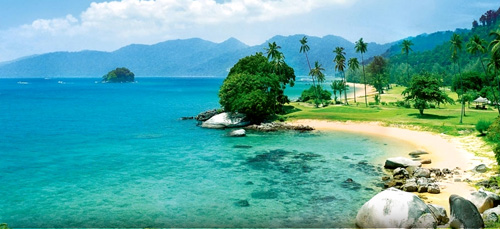
Top Tourist
Attractions
Cameron Highlands: A beautiful and temperate part of Malaysia,
the Cameron Highlands are the agricultural heart of the country. The
countryside is lined with beautiful tea plantations that are worth a
visit. Particularly during the hottest times of the year, this area is
a great place to escape the tropical heat. Also don't miss out on the
opportunity to "pluck your own" fruit.
George Town: A colonial city on the island of Penang, George
Town, is known for it's wonderful cuisine. In particular, head to the
Little India area where you'll find authentic and delicious Indian
restaurants. The owners will eagerly offer you the most delicious
dishes and you'll pay a fraction of what you might pay at home. Street
vendors also sell some of the most delicious local specialties that
are all worth a try.
Taman Negara: This is a national park that is a great place to
experience the rainforest on mainland Malaysia. There are some good
camping options, but many people choose to stay in hostels in town and
explore the hiking trails during the day. The town also offers a good
number of restaurants that are lined up along the river. The weather
can be variable but it's a beautiful place where you might have some
luck spotting some local wildlife.
TOP 5
FESTIVALS IN MALAYSIA
The multi-cultural wonders of Malaysia are best experienced with the
numerous festivals that dot the country’s calendar of events. The
festivities that surround these events in Malaysia will provide a
great opportunity for you to experience the interesting ways in which
different cultures, traditions, and religions have merged beautifully,
making this country the wonderful melting pot that attracts countless
visitors all-year round.
Here are some of the most interesting and most colorful festivals in
Malaysia. You can plan your Malaysian adventure to coincide with these
events, so you can get a better appreciation of what makes this
country uniquely wonderful, in a multi-cultural way.
1) Chinese New Year
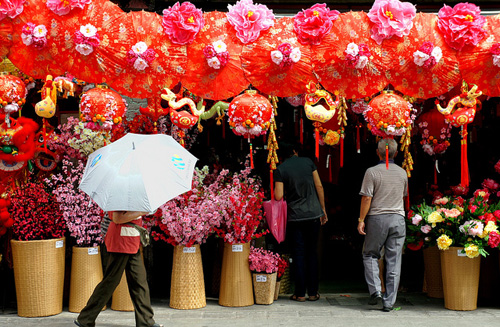
New Year Shopping in Chiantown
Malaysia celebrates Chinese New Year in a grand manner, and is one of
the countries in Southeast Asia to do so in a big scale. The Chinese
communities around the country adorn their houses, the streets, and
other establishments with traditional red decorations to ward off bad
spirits. Fireworks, along with lion and dragon dances, are performed
as part of the 15-day period (in January or February, depending on the
Lunar calendar) of Chinese New Year festivities in shopping malls, on
the streets, and on other business establishments. Family
get-togethers food abundant spreads with food items that are symbolic
of life, energy, and wealth.
2) Deepavali (Diwali)

The Rangoli of Lights
The Hindu Festival of Lights (and also the Hindu New Year’s Day)
celebration in Malaysia is a very colorful and festive one, with the
multitude of lights symbolizing victory and hope against darkness,
evil, and other challenges for the Hindus. Celebrated in October or
November, Deepavali is a day of prayers in Hindu homes and temples; on
this day, the Hindus wake up at dawn to bathe their bodies with oil,
before proceeding to say their prayers. Hindu homes and temples are
beautifully-lit with oil lamps; fireworks, processions, and street
bazaars delightfully mark the festivities in areas where Indian
communities are located (such as Kuala Lumpur’s Little India). If you
are lucky enough to be invited to a Hindu home for Deepavali, you will
definitely have a feast of flavorful Indian dishes and desserts!
3) Hari Raya Puasa (Eid al-Fitr)
.jpg)
Ketupat is a popular traditional celebrative
dish for Eid al-Fitr meal in Malaysia
Marking the end of the Ramadan (the month of fasting), Hari Raya Puasa
is considered as the most important Muslim festival in Malaysia. The
day is celebrated with prayers, and open houses allow Muslims to share
food with their family members and the rest of the community; the best
of Malay cuisine is offered to loved ones and guests to mark the end
of the fasting month. Children and the elderly are given gifts of
money in green packets (similar to the Chinese ang-poh)
4) Thaipusam
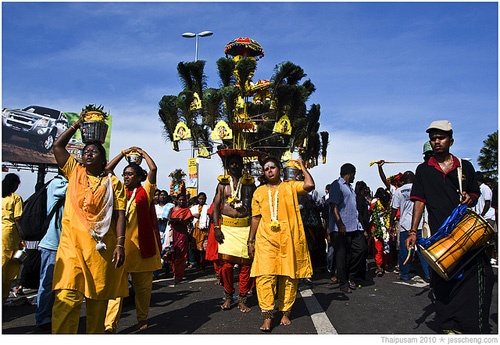
Procession to the Batu Caves
This Hindu festival celebrated mostly by the Tamil community starts
with a procession from the Sri Mahamariamman Temple in Kuala Lumpur,
and proceeds for 15 kilometers to the Batu Caves. The eight-hour
journey culminates in climbing the 272 steps to the top of the caves;
this event attracts more than one million devotees, and tens of
thousands of tourists from other countries. The devotees carry
elaborate sacrificial burdens (called “kavadis”) to implore help and
blessings from the God Murugan. Thaipusam is also celebrated in
another cave site in Ipoh, Perak, and in Penang.
5) Wesak
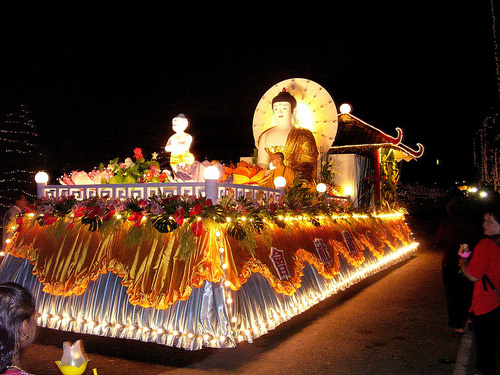
Float procession on the eve of Wesak Day
Wesak or Wesak day is a Buddhist celebration commemorating the three
most important days (birthday, enlightenment, and the achievement of
Nirvana) in the life of Buddha. Buddhists in Malaysia begin the
festivities at dawn, as they gather in Buddhist temples throughout the
country to meditate; giving food and donations to the needy offerings
of joss sticks and incense, and prayers are also part of Wesak day
celebrations. One of the highlights of Wesak is the breathtaking float
procession, usually of a statue of Buddha.
Explore Malaysia
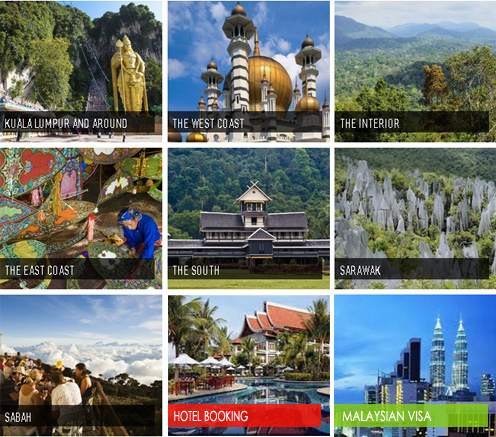
Information About Visa
For Malaysia Visa, Air
Ticket & Tour Packages Contact us
|